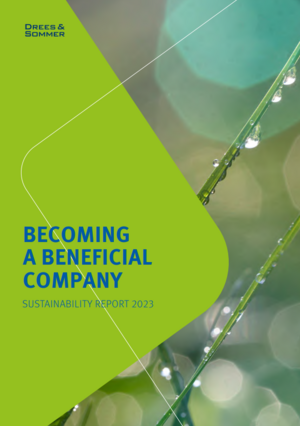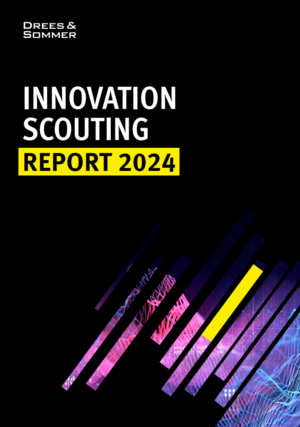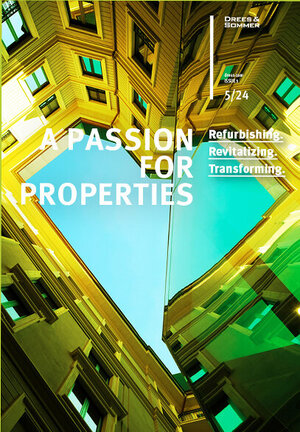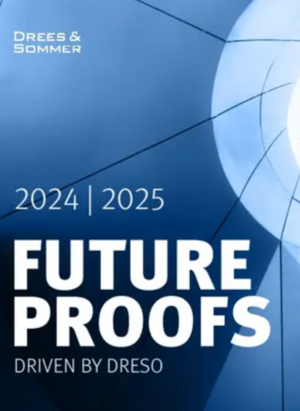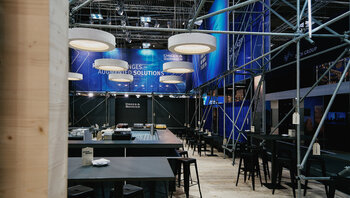Stuttgart/Wiesbaden, December 21, 2022. From 2035, internal combustion engines will be no longer permitted in Germany. Cities and municipalities are already facing the enormous challenge of making their infrastructure fit for the market ramp-up of e-mobility. In urban areas, residents are usually dependent on public charging infrastructure. Therefore, Wiesbaden, together with the consulting company Drees & Sommer, have developed a plan for setting up public charging infrastructure in the Hessian state capital. The project partners have compiled the results of the implementation concept and findings from expert interviews conducted by the Fraunhofer Institute for Material Flow and Logistics (IML) in a “Guide to the development of public charging infrastructure”.
Wiesbaden is one of the few major German cities without a streetcar or subway network. Public transport is provided in the form of buses and express or regional trains. In 2021, there were 96.2 cars per 100 households in Wiesbaden —statistically speaking, almost every household owned a car. The already tense traffic situation within the urban area is exacerbated during peak hours by numerous commuters. By 2019, Wiesbaden had exceeded the nitrogen dioxide annual mean limit values several times. The task for the coming years is clear: increase the share of e-vehicles in private transport, promote cycling and walking, strengthen climate-friendly public transport and develop innovative concepts for inner-city delivery traffic.
Traffic U-turn in Wiesbaden
Funded by the Federal Ministry for Economic Affairs and Energy, the Hessian state capital wants to develop the public charging infrastructure in a targeted manner as part of the “E-Mobility Hub” research project together with the Fraunhofer IML. Since November 2021, the consulting company Drees & Sommer, headquartered in Stuttgart, has been commissioned by the city to develop an implementation concept. The Fraunhofer IML conducted interviews with representatives from municipalities that have already developed public charging infrastructure or are planning to do so. These include the cities of Braunschweig, Darmstadt, Dresden, Düsseldorf, Hanover, Cologne, Munich, Offenbach and Stuttgart.
“Everyone who wants to own an e-car in the future should have the opportunity to charge it easily and inexpensively in our city,” explains Councillor Andreas Kowol, Head of the Department for Building and Transport of the City of Wiesbaden. “That’s why we’re now creating the conditions for this. We are working closely with car park operators, energy suppliers, businesses, retailers, housing associations and academia to achieve this.”
1,700 charging points by 2030
For a valid planning basis, the mobility experts from Drees & Sommer determined the need for public charging infrastructure in the urban area up to the year 2030. Ramp-up scenarios and the future energy demand of the electric vehicles were used as forecast variables for this. The result is that around 50,000 electric cars are expected to be in Wiesbaden by 2030, which corresponds to 35 percent of all registrations. This results in a total demand of around 1,700 public charging points for 2030. “The demand is particularly high in inner-city areas, where residents of multi-family and apartment buildings rarely have access to private charging facilities,” says Martin Huber, Senior Consultant in the Smart Charging team at Drees & Sommer SE.
Charging in the hub or at the streetlight
In addition to private charging points at residential buildings or company car parks, charging options in public car parks and in semi-public areas, for example in customer car parks at supermarkets, are also possible. Other possible scenarios are charging hubs with fast charging points, for example in inner-city public car parks or at petrol stations. Another conceivable option is charging at streetlights. This means that a streetlight is equipped with a plug socket so that an electric car can be connected to it. However, in most German cities, the streetlights are connected to the main power line in groups instead of individually, resulting in low connected loads per streetlight and thus longer charging times. “Charging at streetlights can be a sensible alternative to charging points, but the feasibility must be examined individually in each city,” explains Johannes Bracke, Senior Consultant and expert for energy concepts at Drees & Sommer.
Combining private and public charging options
The important thing is: “Charging points in public and semi-public spaces are directly related to private charging points,” says infrastructure expert Huber. “If availability increases in one of the spaces, the need for charging points in the other space decreases. There may be streets or neighborhoods that are already adequately served. In order to avoid parallel planning and to achieve a demand-oriented and economic expansion across the entire urban area, close coordination of all parties involved is therefore recommended.” To this end, dialog with representatives of politics, the municipal administration, the municipal energy supplier, housing construction, employers, car park operators and the retail trade took place as part of the concept development in spring 2022.
Blueprint for other cities and municipalities
The project partners have collected the most important results of the implementation concept, the dialog process and the expert interviews in a guide for municipalities. “Even if there is no standard process for setting up a public charging infrastructure, cities and municipalities can still learn from each other. It is now important for administrations to know the future demand for public charging infrastructure and to create an implementation concept as a long-term planning basis,” explains Daniela Kirsch, Team Leader Urban Logistics and Electromobility at Fraunhofer IML. “Our guide is intended to serve as a compass and orientation aid to make it easier for municipalities to implement the program.


